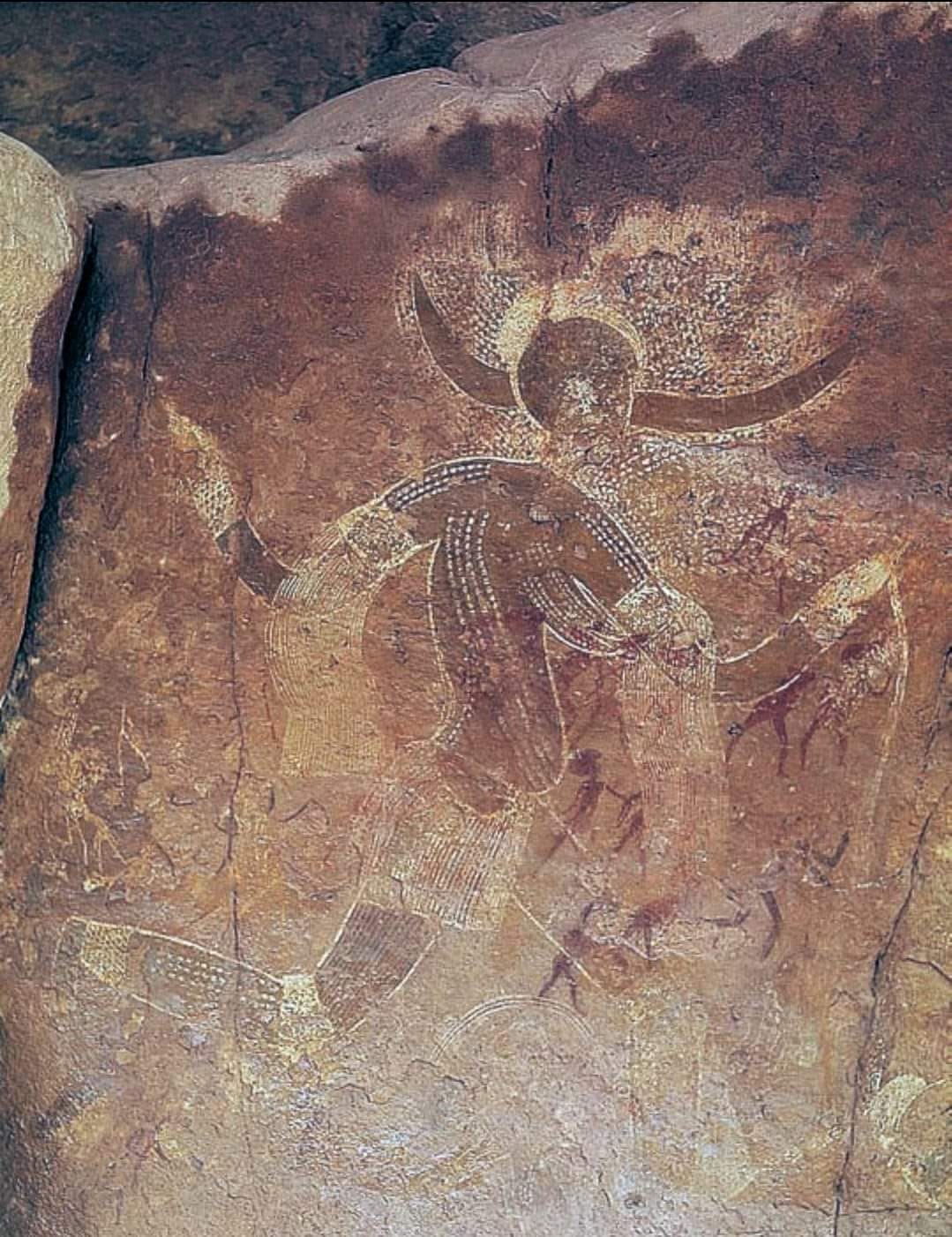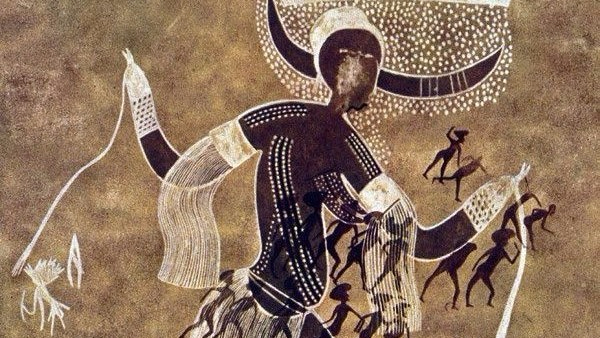In the heart of the Sahara Desert, within the bounds of Algeria’s Tassili n’Ajjer National Park, lies a remarkable testament to prehistoric art—the “Running Horned Woman,” also known as the “Horned Goddess.” This captivating piece of rock art, estimated to be between 6,000 and 8,000 years old, offers a window into a time when the Sahara was a vastly different landscape.

Discovered by French archaeologist Henri Lhote in the 1950s, the “Running Horned Woman” is a striking depiction of a female figure adorned with what appear to be horns, possibly symbolizing the integration of domestic cattle into the daily lives of the people who created this artwork. When Lhote first encountered this ancient masterpiece, he described his experience in vivid detail:
“On the damp rock surface stood out the gracious silhouette of a woman running. One of her legs, slightly flexed, just touched the ground, while the other was raised in the air as high as it would normally go. From the knees, the belt, and the widely outstretched arms fell fine fringes. From either side of the head and above two horns that spread out horizontally was an extensive dotted area resembling a cloud of grain falling from a wheat field. Although the whole assemblage was skillfully and carefully composed, there was something free and easy about it…”

This graceful depiction is just one of over 15,000 pieces of rock art found in Tassili n’Ajjer, with some artworks possibly dating back over 12,000 years. These ancient images provide a fascinating glimpse into a time when the Sahara was not the vast arid desert we know today, but a thriving green landscape teeming with life.
Across this now-barren expanse, prehistoric rock art portrays animals and plants that are no longer found in the Sahara. This artwork reflects a period when the desert was a lush environment, rich with rivers, grasslands, and forests, inhabited by a diverse array of wildlife including hippos, crocodiles, gazelles, and giraffes. This verdant era also saw the existence of enormous lakes, such as Lake Mega Chad, which, though situated just south of the present-day desert, was once larger than any lake on the planet today.

The “Running Horned Woman” stands as a poignant reminder of this bygone epoch, capturing the imagination and evoking curiosity about the ancient peoples who once thrived in what is now one of the harshest environments on Earth. Through this art, we are connected to a distant past, where human expression and creativity flourished amidst a landscape vastly different from the present-day Sahara.



